The Timeless Travelogue of the Ageless Ashok Kumar
ना जाने किधर आज मेरी नाव चली रे…
“It is good to have an end to journey toward; but it is the journey that matters, in the end”.
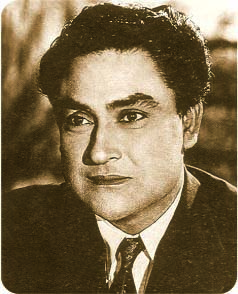 ‘Na Jaane Kidhar Aaj Meri Naav Chali Re’, title of the Manohar Monologues on the Timeless Travelogue of the Ageless Ashok Kumar, traces the unchartered, long and illustrious journey of a non entity named Kumudlal Kunjalal Ganguli who went on to become the legendary thespian Ashok Kumar.
‘Na Jaane Kidhar Aaj Meri Naav Chali Re’, title of the Manohar Monologues on the Timeless Travelogue of the Ageless Ashok Kumar, traces the unchartered, long and illustrious journey of a non entity named Kumudlal Kunjalal Ganguli who went on to become the legendary thespian Ashok Kumar.
From Bhagalpur in Bihar to Khandwa in Madhya Pradesh, from Kolkata in Bengal to Bombay in Maharashtra, it was one long journey to an unknown destination.
Born on 13 October, 1911 in a respectable and well to do Bengali Brahmin family of lawyers, Kumudlal was the oldest of the three brothers and a sister. His sister Sati Rani was married to Sashadhar Mukerji who had joined Himanshu Rai’s newly established film studio Bombay Talkies as an assistant sound engineer in 1935. Rai was on the look out for more bright and educated young men from respectable families. And Kumudlal, not giving way to the pressure of joining the family profession, joined Bombay Talkies.
Kumudlal’s journey kick started as a lab technician and apprentice camera assistant to Joseph Wirsching, the German cameraman at Bombay Talkies. He had not even an inkling as to when and where destiny would veer and tack his ‘jeevan naiyya’. By a quirk of circumstances, he was pushed by the insightful Himanshu Rai to don the grease paint and face the ‘lights, camera and action !!’ As the clichéd goes: The rest is history.
Spurred by the success of its maiden production Jawani Ki Hawa starring Najam-ul-Hussain and Devika Rani, the star-wife of Himanshu Rai, the latter went on floors with the next film Jeevan Naiyya with the same cast. During the shooting, cupid struck and the two young actors got swept away by the ‘jawani ki hawa‘ and eloped. Rai was emotionally disturbed and Mukerji helped him out of the predicament; he tracked the couple somewhere in Calcutta and brought them back. Hiding his embarrassments, Rai accepted his errant actress-wife back but showed the door to Najam ul Hussain.
A worried Rai was on the lookout for a hero to step in and take over. Without batting an eyelid, he replaced Najam-ul-Hussain with the charming and good looking but a nervous and reluctant Kumudlal to face the camera ! Intuitively, Rai had already cast him in a fleeting appearance in Jawani Ki Hawa just to see how he looked on screen.
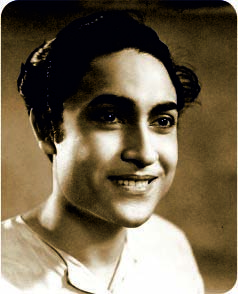 Rai arranged for a screen test and the studio’s in house director Franz Osten rejected Kumudlal because of ‘girlish features’ and ‘square jaw line’. Kumudlal rejoiced at the rejection and felt relieved. He tried his best to wriggle out of the new avtaar he was forced to don; but there was no way he could escape. He protested meekly to romance the wife of his boss; gave excuses of disapproval from his conservative parents; got his hair trimmed too short; disappeared for days together; but in vain. The moment he got back his beauty crop, he was readied to face the camera.
Rai arranged for a screen test and the studio’s in house director Franz Osten rejected Kumudlal because of ‘girlish features’ and ‘square jaw line’. Kumudlal rejoiced at the rejection and felt relieved. He tried his best to wriggle out of the new avtaar he was forced to don; but there was no way he could escape. He protested meekly to romance the wife of his boss; gave excuses of disapproval from his conservative parents; got his hair trimmed too short; disappeared for days together; but in vain. The moment he got back his beauty crop, he was readied to face the camera.
He tried again his best to come out of the predicament. The presence of a large crew on the sets further intimidated him; he fumbled and goofed up with his lines; bashed the villain (H Masih) at the wrong time and knocked him down with the very first blow which immobilised Masih with a severe knee injury and delayed the shooting; inadvertently pulled the elaborate coiffeur of the heroine (Devika Rani). But, ‘Destiny’ had clearly written the arrival of a new actor, the adulation that he was to enjoy as a star, the accolades and awards that he were to achieve and the legendary status that he was to be accorded.
Kumudlal was christened Ashok Kumar with his debut film Jeevan Naiyya. Titled symbolically, little did he know where his ‘life boat’ would sail and take him through. The question was pertinent: ‘Na Jaane Kidhar Aaj Meri Naav Chali Re’ ? The quotient was perfect: ‘Lights, Camera, Action’ for over five long decades from the mid-30s !!
Ashok Kumar embarked on a long journey without a destination with his first film Jeevan Naiyya. After a shaky start, he went on to do more films for Bombay Talkies under a contract: Achhut Kanya, Janmabhoomi, Savitri, Nirmala,  Izzat, Vachan, Anjaan all starring him and Devika Rani. Ashok Kumar played the role of a docile, introvert, shy, uppercrust Brahmin youth in love with Devika Rani as a bashful, demure, impish and innocent ‘untouchable’. Achhut Kanya touched and tackled the untouched topic of untouchability with a touching temperament. The innocuous film with its hard hitting comment on the caste system and social inequalities was layered with impassioned lyricism and romanticism. The film became the biggest hit of its time and shot him to instant stardom; after that, there was no looking back for Ashok Kumar.
Izzat, Vachan, Anjaan all starring him and Devika Rani. Ashok Kumar played the role of a docile, introvert, shy, uppercrust Brahmin youth in love with Devika Rani as a bashful, demure, impish and innocent ‘untouchable’. Achhut Kanya touched and tackled the untouched topic of untouchability with a touching temperament. The innocuous film with its hard hitting comment on the caste system and social inequalities was layered with impassioned lyricism and romanticism. The film became the biggest hit of its time and shot him to instant stardom; after that, there was no looking back for Ashok Kumar.
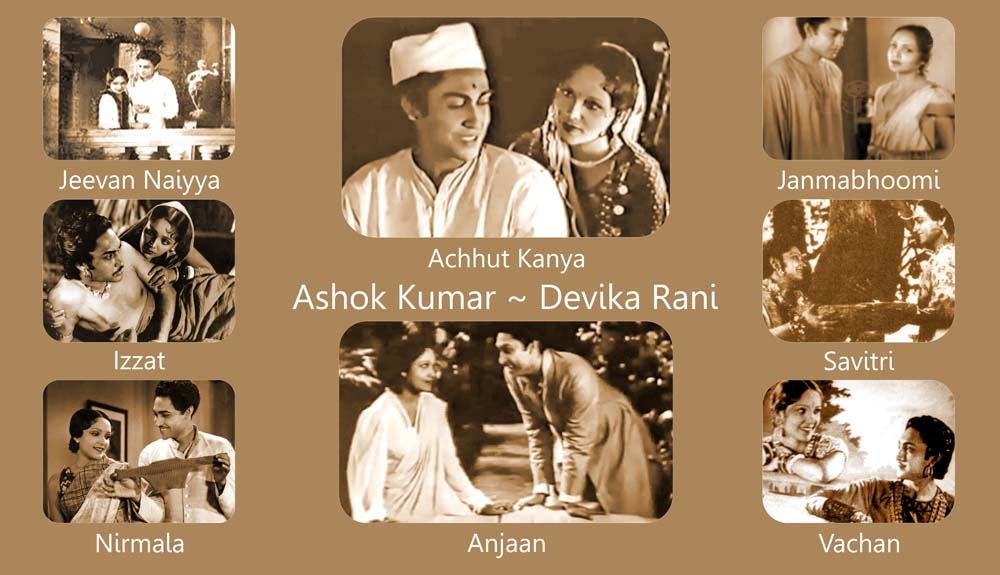
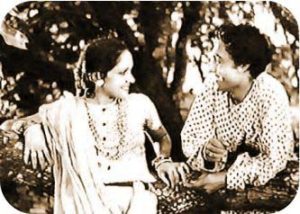 There was no playback then and with no formal training in music, Ashok Kumar (like many of his contemporaries) sang his songs with great felicity. The romantic song, Main bann ki chidiya banke bann bann dolun re, composed by Saraswati Devi and sung by the lead pair, is acclaimed as a timeless classic and remembered with great nostalgic. After the immensely popular but now forgotten singing star pair of Master Nissar and Jahan Ara Kajjan, the successful teaming of Ashok Kumar and Devika Rani set a new trend.
There was no playback then and with no formal training in music, Ashok Kumar (like many of his contemporaries) sang his songs with great felicity. The romantic song, Main bann ki chidiya banke bann bann dolun re, composed by Saraswati Devi and sung by the lead pair, is acclaimed as a timeless classic and remembered with great nostalgic. After the immensely popular but now forgotten singing star pair of Master Nissar and Jahan Ara Kajjan, the successful teaming of Ashok Kumar and Devika Rani set a new trend.
Ashok Kumar made an equally adorable and popular singing star pair with yet another leading lady: Leela Chitnis. The two acted together in three hugely successful films (all of Bombay Talkies): Kangan, Bandhan, Jhoola which had perennial charmers like Radha Radha pyaari Radha, Chal chal re naujawan, Na jaane kidhar aaj meri naav chali re, Aaj mausam salona salona re.
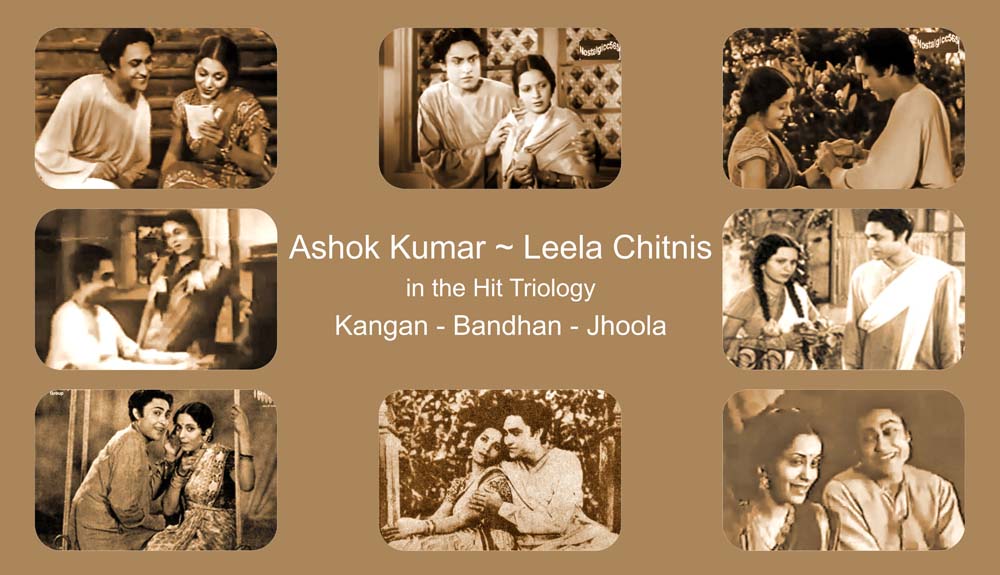
With success becoming a habit, Ashok Kumar had stopped worrying about the next line of action. He recollected his father’s philosophy: “I’m a river without oars because the oars are in the hands of someone else. So I just flow with the tide…!” And undaunted, his ‘naiyya’ too navigated to the next decade, the 40s marked by political turbulence and communal unrest.
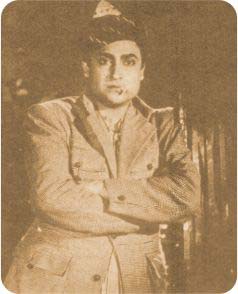 More films of Bombay Talkies released like Anjaan (with Devika Rani), Azaad (with Leela Chitnis) and Naya Sansar (with Renuka Devi) followed by the biggest box office hit of all times Kismat (which ran for more than three years in a single theatre in Calcutta). Ashok Kumar portrayed the role of a cool and clever, suave and smart petty criminal in the film inspired by Walter Wagner’s film Algiers. He was glib tongued, cool and quick witted, smart and suave and ready with a revolver, a punch, a con trick, a sleight of hand and a cigarette all of which he carried off with great aplomb!
More films of Bombay Talkies released like Anjaan (with Devika Rani), Azaad (with Leela Chitnis) and Naya Sansar (with Renuka Devi) followed by the biggest box office hit of all times Kismat (which ran for more than three years in a single theatre in Calcutta). Ashok Kumar portrayed the role of a cool and clever, suave and smart petty criminal in the film inspired by Walter Wagner’s film Algiers. He was glib tongued, cool and quick witted, smart and suave and ready with a revolver, a punch, a con trick, a sleight of hand and a cigarette all of which he carried off with great aplomb!
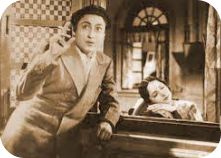 Despite his ‘faults, flaws and fallacies’ by social norms, there was humanity in his flawed character and humility in his flirtatious demeanour; he was a criminal with a heart of gold which melded with and melted for the underdogs; a chivalrous paramour who went soft and tender for a crippled damsel in distress; a romantic crooner who serenaded his lady love with caring and caressing lyrics, ‘…Mera bulbul so raha hai, shor ghul na macha’ !
Despite his ‘faults, flaws and fallacies’ by social norms, there was humanity in his flawed character and humility in his flirtatious demeanour; he was a criminal with a heart of gold which melded with and melted for the underdogs; a chivalrous paramour who went soft and tender for a crippled damsel in distress; a romantic crooner who serenaded his lady love with caring and caressing lyrics, ‘…Mera bulbul so raha hai, shor ghul na macha’ !
Ashok Kumar created a nation wide sensation with his anti hero role and set a trend which was emulated down the years by several top actors: Dev Anand, Amitabh Bachchan, Shah Rukh Khan to name a few.
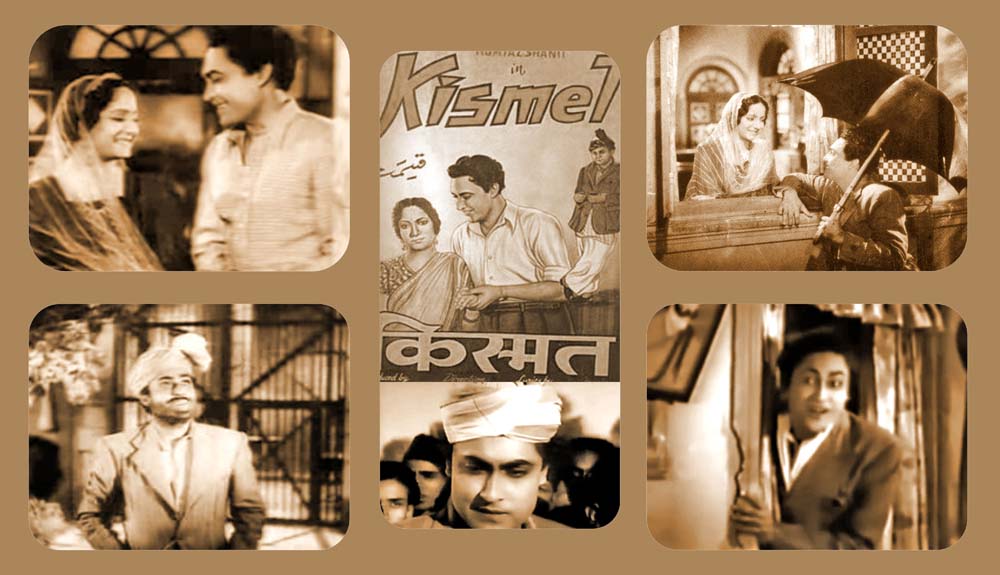
The 40s saw Ashok Kumar do a variety of roles in films like Mehboob Khan’s Najma (a muslim social) and Humayun (probably the only historical he did) and in social films like Chal Chal Re Naujawan, Saajan, Aath Din, Shikari made by Filmistan (an off spring of Bombay Talkies, formed by S Mukherji and his associates who were all in employment earlier with the Bombay Talkies).
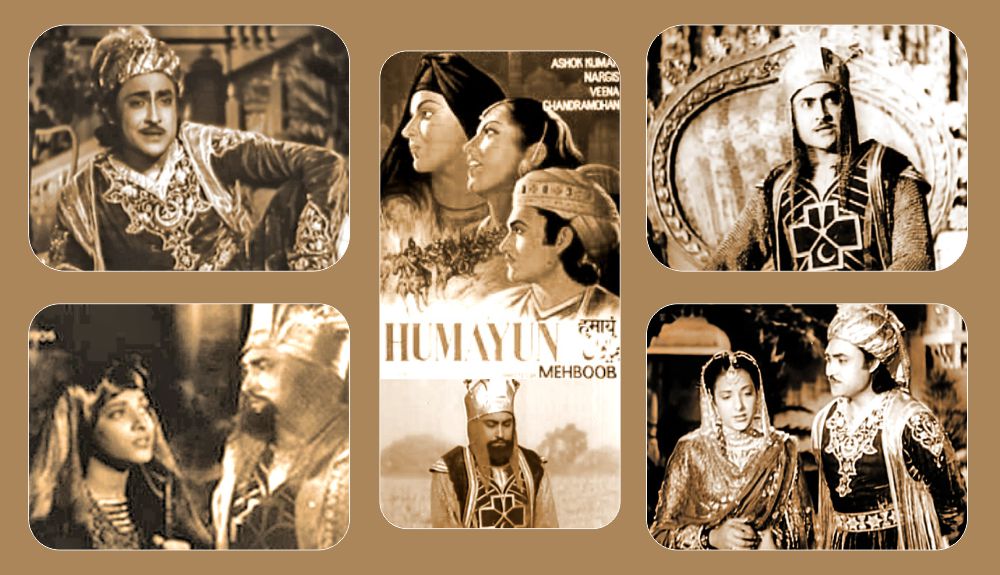
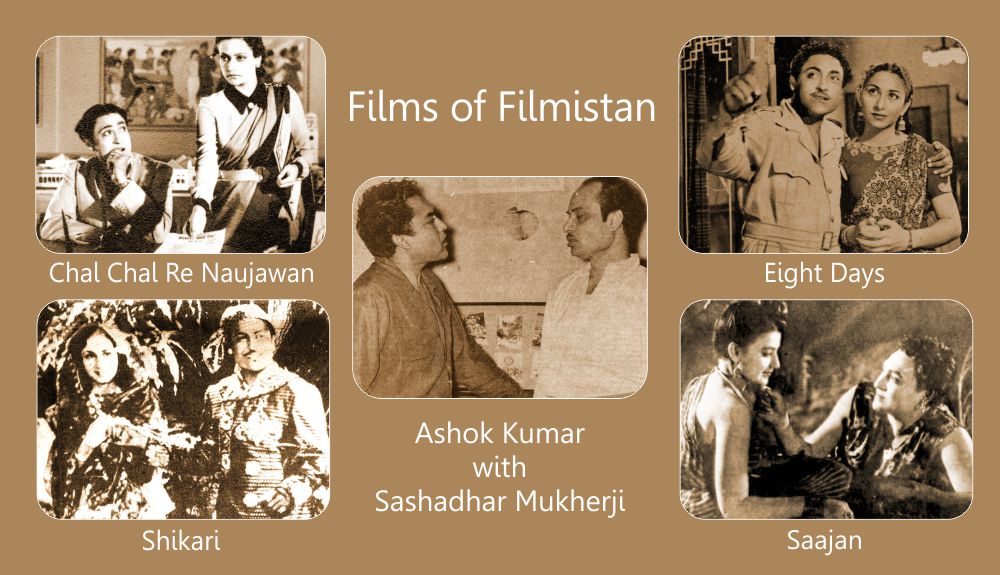 With a string of successful commercial capers dealing with contemporary themes as in Achhut Kanya, Janmabhoomi, Izzat, Bandhan, Naya Sansar, Kismat, Humayun, Chal Chal Re Naujawan; backed by conscientious, high minded and idealistic roles, at times up in arms with the vested interests and feudal methods and crusading and revolting against the social and political system; enlivened by catchy and ever relevant and ever resonant songs with patriotic fervour: Chal chal re naujawan, Ek naya sansar basaalen, Door hato ae duniyawalo, Bharat ke naujawano chalo ek raah par, Ashok Kumar came to be identified as the visage and voice of the contemporary Indian youth under the British regime. Incidentally, characters from history or mythology did not suit his persona nor did they appeal to the sensibilities of the movie goers.
With a string of successful commercial capers dealing with contemporary themes as in Achhut Kanya, Janmabhoomi, Izzat, Bandhan, Naya Sansar, Kismat, Humayun, Chal Chal Re Naujawan; backed by conscientious, high minded and idealistic roles, at times up in arms with the vested interests and feudal methods and crusading and revolting against the social and political system; enlivened by catchy and ever relevant and ever resonant songs with patriotic fervour: Chal chal re naujawan, Ek naya sansar basaalen, Door hato ae duniyawalo, Bharat ke naujawano chalo ek raah par, Ashok Kumar came to be identified as the visage and voice of the contemporary Indian youth under the British regime. Incidentally, characters from history or mythology did not suit his persona nor did they appeal to the sensibilities of the movie goers.
In the post independence period, Ashok Kumar dabbled with film production and took over the reins of the by then defunct Bombay Talkies; for his alma mater, he made films like Majboor (which had the break through song ‘Dil mera toda’ of Lata Mangeshkar), Ziddi (which introduced Kishore Kumar as a playback singer and which marked the first hit of Dev Anand), Asha, a lesser known film and, not the least, Mahal, the monumental, mystery laden, haunted citadel of love with no plot of murder and one of the biggest hits of the decade.
The unprecedented success of Mahal and unabated popularity of its songs particularly ‘Aayega aanewala’ resurrected the fading glory of Bombay Talkies; immortalised the master composer Khemchand Prakash (who did not live to savour the success of the film and popularity of his songs – he died just two months before the release of the film); shot Madhubala to super stardom; heralded the arrival of Lata Mangeshkar – she came, she saw and she conquered to become the unrivalled Melody Queen of all she sang and surveyed !!
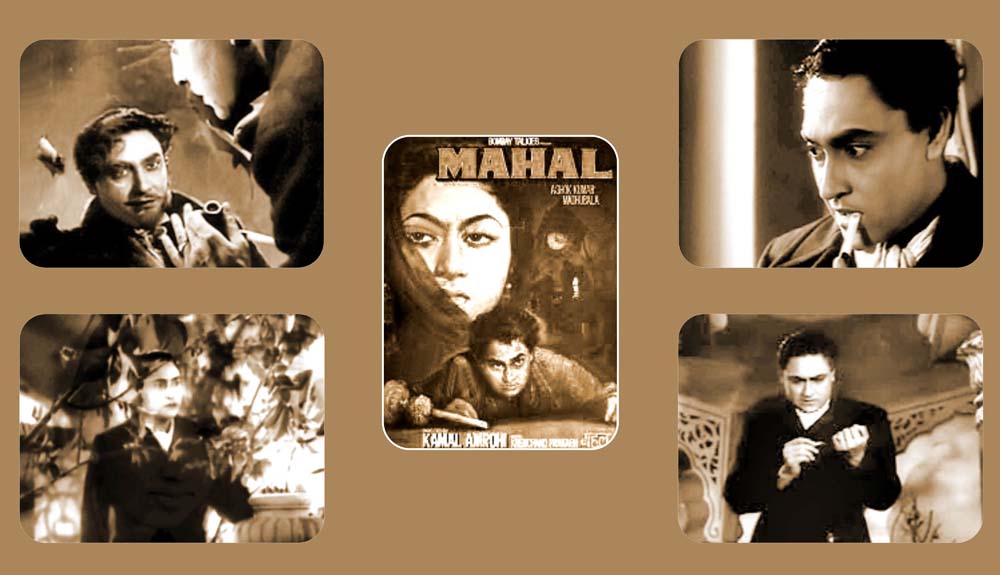
With a string of successful films like Achhut Kanya, the trilogy of Kangan, Bandhan, Jhoola to name a few and the two trend setting super hits of the 40s: Kismat and Mahal, his initial apprehensive conundrum, ‘Na jaane kidhar aaj meri naav chali re?’ gave rise to an uncertain poser by the end of the decade: ‘Kya jaane dil ki kashti kab tak lage kinaare?’
His ‘naav’ or ‘kashti’ sailed strongly and navigated successfully onto the 50s to face tough competition from the new brigade of young and successful stars: Dev Anand, Dilip Kumar and Raj Kapoor. For the record, he did just a film or two with each of them in the 50s: Tamasha and Baadbaan with Dev Anand, Deedar with Dilip Kumar and Bewafa with Raj Kapoor.
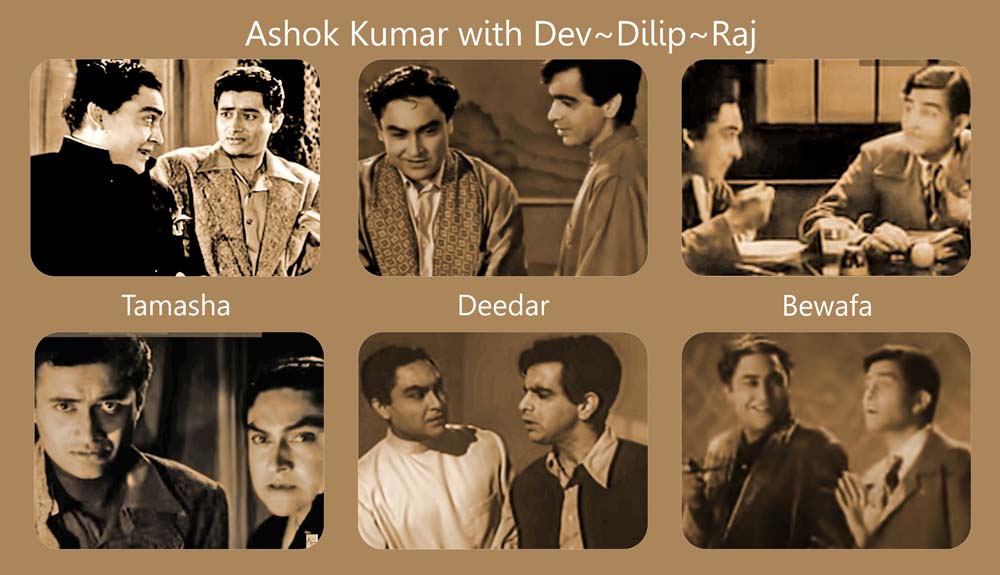
Age wise, Ashok Kumar was relatively past his prime (he was forty plus) and yet he held his own in many social and crime oriented films in the 50s; though the pristine charm and innocence of his earlier films was missing. Besides Devika Rani, Leela Chitnis, Mumtaz Shanti and Veena, he acted with other heroines ranging from Suraiya, Nalini Jaywant, Meena Kumari, Madhubala and Nargis to Kamini Kaushal, Geeta Bali, Nutan, Vyjayantimala and Mala Sinha to Nirupa Roy, Nimmi, Bina Rai, Shyama, Shakila and southern heroines like Anjali Devi, Bhanumati, Padmini and Ragini.
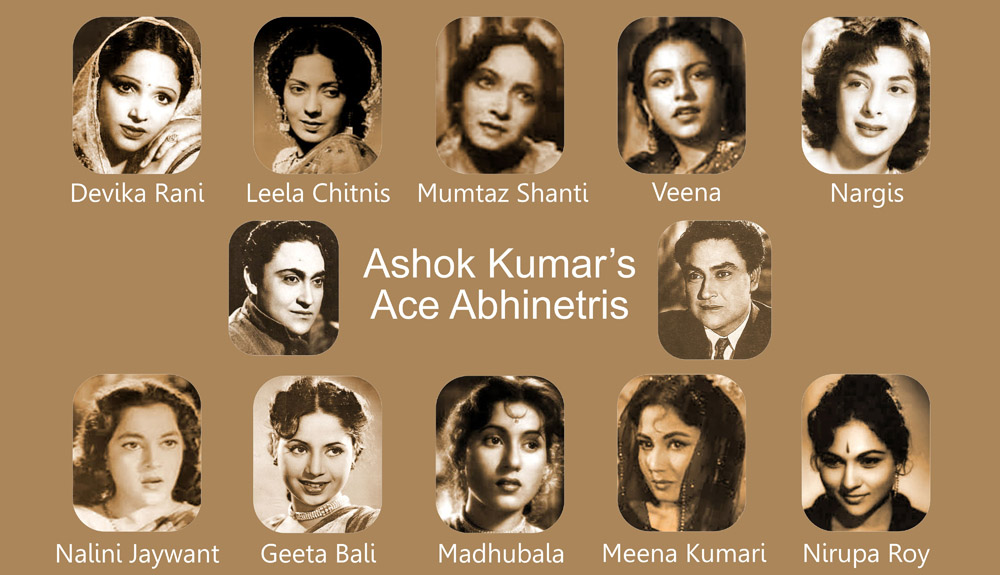
Some of the noteworthy and successful films of the 50s include:
* Aadhi Raat (with a progressive angle to his character), Bewafa and Deedar: all three with Nargis; the latter two films marked the advent of Ashok Kumar portraying the unparalleled parallel roles in films to come in the next decade,
* Mashaal (a literary and message oriented progressive film),
* Samadhi (as a freedom fighter), Sangram (a hardened criminal in Hollywood style), Naubahar and Naaz: all with Nalini Jaywant who went on to do ten films with him and who was also romantically linked with the thespian,
* Afsana (in a double role with Veena and Kuldip Kaur),
* Bandish (in a light hearted role), Parineeta (in a sensitive portrayal of unspoken emotions and unexpressed love) and Ek Hi Raasta (again as a progressive character marrying an aggrieved widow): all with Meena Kumari who was his co-star in about 12 to 13 films,
* Bhai Bhai (as an errant husband with negative shades), Karigar (an off beat character of an underdog), Kangan, Bedard Zamana Kya Jaane: all family socials with Nirupa Roy who made an ideal and endearing pair with him in several idealistic and enduring roles,
* Ek Saal, Howrah Bridge (crime based films) and Chalti Ka Naam Gaadi (in a light hearted role as a misogynist boxer): all with Madhubala, though in the latter film she was paired opposite his younger brother Kishore Kumar,
* Dhool Ka Phool: a cameo role opposite Mala Sinha; he played her lover, husband, father and father in law in many films of the 60s.
Along with these social and musical films, he did some B Grade crime films too: Mr. X, Night Club, Light House, Daaka, Sheroo, Ustad in the 50s.
Ashok Kumar went on to don a more matured and dignified avatar in the 60s. He was no more the young romantic hero; he was fifty plus and had added considerable weight too. Yet he played weighty roles as the third angle in romantic triangles like Aarti (a role with negative shades as a money minded doctor), Chitralekha (as a fake moral priest oscillating between spirituality and sensuality), Bheegi Raat and Bahu Begum (in both as a loser in love but winning the audience sympathy); all the four films featured the aging trio: Ashok Kumar, Pradeep Kumar and Meena Kumari. Even in films with younger heroes of the next generation, Ashok Kumar had meaty and mighty, power packed and plum character or central roles and retained his top billing status.
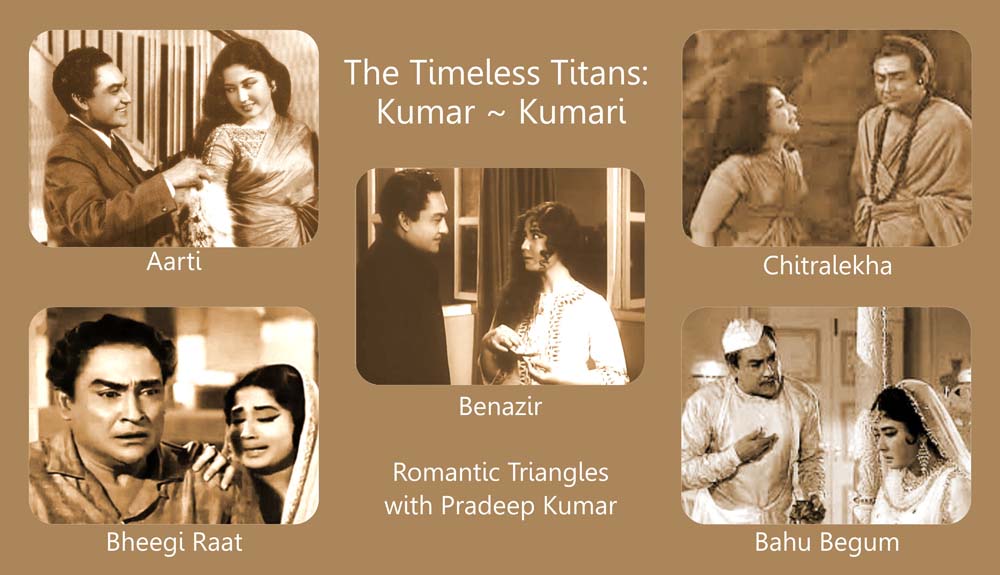
He had no starry airs about him; he was not selective about the roles like some of contemporaries and juniors; made no discrimination of the roles offered to him with positive or negative shades; did not fuss about the length of the role, his co-stars, the banner, the director. He had his own loyal audience and did not have any fear of losing their adulation, admiration, respect and sympathy.
The first half of the decade did see him as a hero in some eminently forgettable B grade crime based films: Aadhi Raat Ke Baad, Burma Road, Dark Street, Flat No. 9, Hong Kong, Isika Naam Duniya Hai, Kaala Aadmi, Private Secretary, Warrant. But he made a graceful transition to character roles playing the doting and dominating, caring and concerned, lovable brother, father and grandfather befitting the endearing epithet Dada Moni conferred by his only sister.
Yes, in some films he played the protagonist and acted as ‘hero’ in roles suiting his age and image like Hrishikesh Mukherji’s Ashirwad (he was 58 years then). Despite two severe asthmatic attacks during the making of the film, he put his heart and soul in to the character and lived the role. He clinched several prestigious awards for his outstanding performance as the rich but principled man who relinquishes the luxuries of life to mingle more with the poor and downtrodden thereby winning their love, trust and respect.
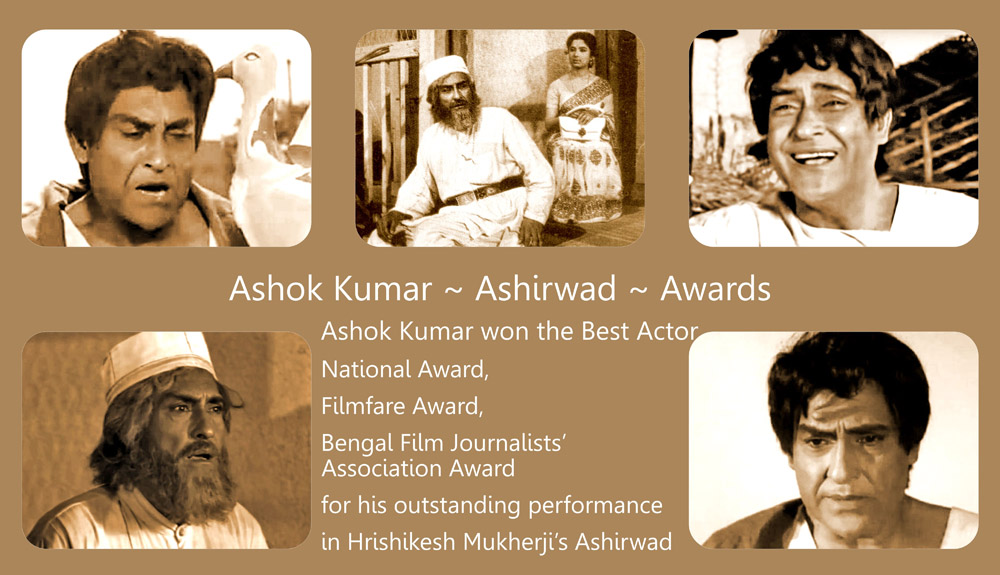
Some of the other prominent films of Ashok Kumar in elderly and matured character roles but no less than central or significant in the 60s include:
* Raakhi (as a doting brother for which he won his first best actor award),
* Meri Surat Teri Ankhen (in a very unconventional and deglamorous role of a physically frightful mortal; gory and ugly looking),
* Gumrah (as the cheerfully and delightfully suspicious and suave lawyer-husband of Mala Sinha),
* Kanoon, Ye Raaste Hain Pyar Ke, Mamta (as a composed, crafty and caring Law Abiding Wizard respectively; ),
* Dharmaputra and Bandini (as a freedom fighter and freedom-terrorist respectively),
* Jewel Thief (in an unsuspecting role as the real Jewel Thief; he literally ‘stole’ the show from Dev Anand),
* Ustadon Ke Ustad, Afsana, Intqaam, Do Bhai (roles with negative shades and on the other side of law),
* Oonche Log (a jolly and jovial but blind retired army major who faces an upheaval at his own home),
* Mere Mehboob (a musical muslim social portraying him as heavily indebted nawab trying to live on his own terms); other muslim socials like Benazir, Bahu Begum and Naqli Nawab),
* Aaj aur Kal (as a disciplinarian, fastidious and stern father),
* Aansoo Ban Gaye Phool (as an honest and upright principal)
And, not to forget the host of Madras melodramas of the south banners: Grahasthi (one of his best as a devoted husband but leading a dual life with two families), Pooja Ke Phool, Daadimaa, Mehrbaan, Nai Roshni, Paisa Ya Pyar. In all these films he was attired in the traditional and time honoured dhoti and kurta with shawl, specs, stick and cigar (which had replaced the cigarette of the 40s and 50s that he flaunted in style) which defined his role as the patriarch!
There were many ups and downs (oonchi neechi lehron se naav meri dole) in his breathtaking ride, but what kept the doyen going was his discipline, dedication and dependability; his method to the madness (he rehearsed most of his challenging scenes in his bathroom where he would lock himself for an incredibly long time); his personal charm and charisma for the audience and professional adjustability and allowance for the producers.
He did a wide variety of roles with seemingly effortless ease and elan in all genres of films with almost every star (minus any controversy) in an incredibly long career. He acted mostly with his versatile eyes which could portray a whole gamut of emotions and expressions; like a chameleon changing colours, he could change his caring, compassionate look to a cold and callous stare in a fraction of a second; switch over to a variety of characters in a flash.
He could touch our inner cords, tug at our heart strings, bring a lump in our throat, make us sigh and sob through his poignant and sensitive portrayals and at the same time, he could tickle our ribs, kindle a smile, evoke a chuckle, invoke to a loud laughter though his cheerful, playful and light hearted roles.
In the 70s, trends in films and filmmaking had changed considerably. The age of innocence and obeisance had come to an end; the visage of roses and romance had faded away; the heritage of family sagas and fiestas was waning away. Where did that leave the ageless but aging Ashok Kumar? Little did he know that there was more in store for him in the swingeing scenario of the 70s, a decade marked as an era of Action and Amitabh Bachchan, violence and vendetta, guns, golis and goondas !!
Dada Moni continued to play the affectionate and lovable, caring and doting as well as aristocratic, stern and thorough bred, father / grandfather (in social films like Aap Beeti, Anand Ashram, Anuraag, Anurodh, Dulhan, Mili, Naya Zamana, Paise Ki Gudiya, Purab aur Paschim, Safar, Sharafat, Tumhare Liye, Uljhan, Zameen Asmaan).
With the trademark twinkle in his eyes and mischievous smile, Ashok Kumar had already given the audience glimpses of his comical, funny and lighter side in films like Jhoola and Kismat of the 40s, Bandish, Chalti Ka Naam Gaadi and Tamasha of the 50s and Aadhi Raat Ke Baad, Paisa ya Pyar and Pooja Ke Phool of the 60s. He carried it to a higher level with an added element of innocence, frolicking, mischief and naughtiness befitting his age and image, stature and status and with great relish in comedy capers like Dil Daulat Duniya, Do Phool, Victoria No. 203, Chori Mera Kaam, Chor Ke Ghar Chor, Chhoti Si Baat, Khatta Meetha of the 70s to Khoobsurat and Shaukeen of the early 80s. The audience simply loved him and lapped up his hilarious and uproarious acts with the same loyalty.
Here was an actor, who could not even wear a forced and wry smile in the beginning and nascent stage of his career; but eventually, he made us cry and laugh in the same measure with his endearing and heart warming performances.
Age was catching up… and in the 80s, one saw him do cameo / small roles / brief and friendly appearances, more as a friendly gesture, in a number of films: Aaj Ki Awaaz, Awaam, Durga, Jyoti, Mr. India, Tawaif (besides of course the eternally charming Khoobsurat and Shaukeen).

He dabbled with television serials too and who can forget him as the narrator in the most famous serial Humlog or as the last Mughal emperor Bahadur Shah Zafar in the serial by the same name. He acted in yet another serial named Bheem Bhavani starring him and his brother Anoop Kumar; Kishore Kumar too was to be a part of the serial but by then he was no more. He did some occasional ads too like the Ambiking Suitings, Brylcream, Prudent tooth paste with his actress-grand daughter Anuradha Patel and, not the least, the famous Pan Parag ad with Shammi Kapoor (the only time the two big stars came together on screen). Incidentally, Shammi Kapoor’s Boy Friend (1960) was a disappointing remake of Ashok Kumar’s all time hit Kismat.
On remakes, many of the later year films were either straight remakes or thin rehashes of his earlier hits or the thematic content and intent of his films provided the needed inspiration for certain crucial scenes if not the entire film:
Kismat (1943) – Boy Friend (Shammi Kapoor – Madhubala),
Najma (1943) – Dil Apna Preet Parai (Raj Kumar – Meena Kumari – Nadira)
Afsana (1951) – Dastaan (Dilip Kumar – Sharmila Tagore – Bindu),
Parineeta (1953) – Parineeta (Sanjay Dutt – Saif Ali Khan – Vidya Balan),
Kangan (1959) – Uljhan (Sanjeev Kumar – Sulakshana Pandit – Farida Jalal),
Aaj aur Kal (1963) – Parichay (Pran – Jeetendra – Jaya Bhaduri Bhaduri),
Gumrah (1963) – Bewafa (Anil Kapoor – Akshay Kumar – Kareena Kapoor),
Ye Raaste Hain Pyar Ke (1963) – Achanak (Vinod Khanna Lily Chakravarty), Rustam (Akshay Kumar – Ileana D’Cruz),
Bheegi Raat (1965) – Mann (Anil Kapoor – Amir Khan – Manisha Koirala),
Mamta (1966) – Dard (Rajesh Khanna – Hema Malini – Poonam Dhillon)
Victoria No. 203 (1972) – Victoria No. 203 (Anupam Kher – Om Puri),
Do Phool (1973) – Ankhen (Govinda – Chunky Pandey – Kadar Khan),
Khatta Meetha (1977) – Golmaal 3 (Mithun Chakraborty – Ratna Pathak –Ajay Devgan – Kareena Kapoor – Tushar Kapoor – Arshad Warsi – Kunal Khemu),
Khoobsurat (1980) – Khoobsurat (Ratna Pathak – Sonam Kapoor),
Shaukeen (1982) – The Shaukeens (Anupam Kher – Annu Kapoor – Piyush Mishra – Akshay Kumar – Lisa Haydon)
(E & O E)
Ashok Kumar had a wide variety of other interests too like singing (remember, he sang his own songs in the 30s and 40s when there was no playback), painting, photography, poultry farming, astrology, homeopathy, chess, boxing, reading (he had a huge library), races and recording. He was a linguist and spoke French and German fluently.
He had a fad for keeping ‘nick names’ for his near and dear ones: he called his wife ‘Bhama’ and his youngest daughter Preeti as ‘Paletoile’; R D Burman was given the now iconic musical name ‘Pancham’.
With advancing age, Dada Moni had reduced his work; filmmakers also did not trouble him much and kept him out of the arclights and erratic work schedules.
Though he led a comfortable retired life, tragedies struck one after the other; he first lost his wife in April 1987 (just a year before their 50th marriage anniversary); then his youngest brother Kishore Kumar in the same year on 13 October (which also marks the birthday of Dada Moni and after which he stopped celebrating his birthday); his friend, guide and brother-in-law S Mukherji in November 1990; and in September 1997, he lost his younger brother Anoop Kumar too.
And finally, Dada Moni too shed his mortal coil on the fateful afternoon of 10 December, 2001 while watching the TV; he was all alone with only Khurshid, his Man Friday of over 50 years, by his side at that terminal moment but was joined soon by the bereaved family members and other close associates. He bid adieu and left for his heavenly abode but not without giving answer to the recurring Question: “Na jaane kidhar aaj meri naav chali re …”. Finally, his ‘Jeevan Naiyya’ got anchored with the sombre strains of “Mann ne kaha piya ke gaon chali re….. bilkul akeli akeli chali re.…” ringing in the background!!
Manohar Iyer
98205 35910

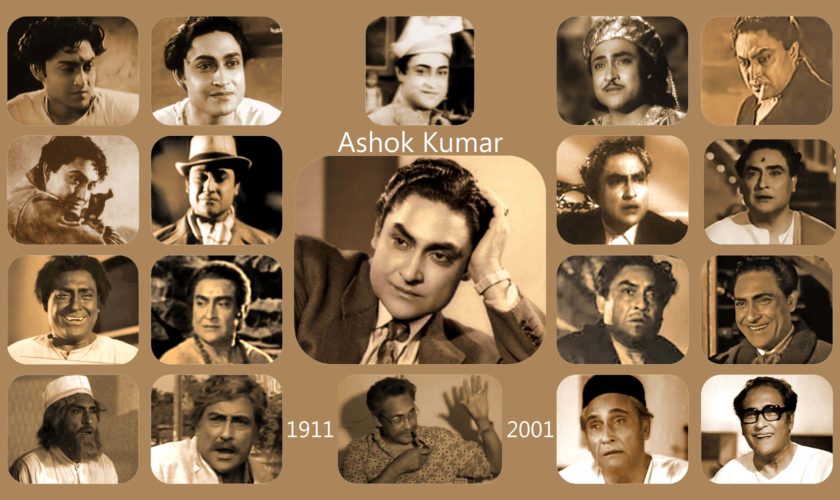
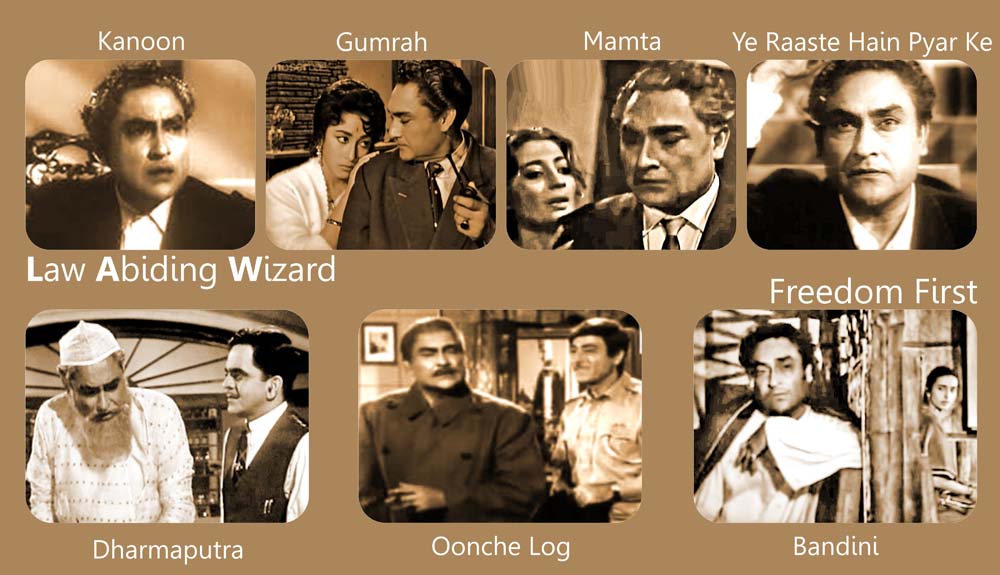
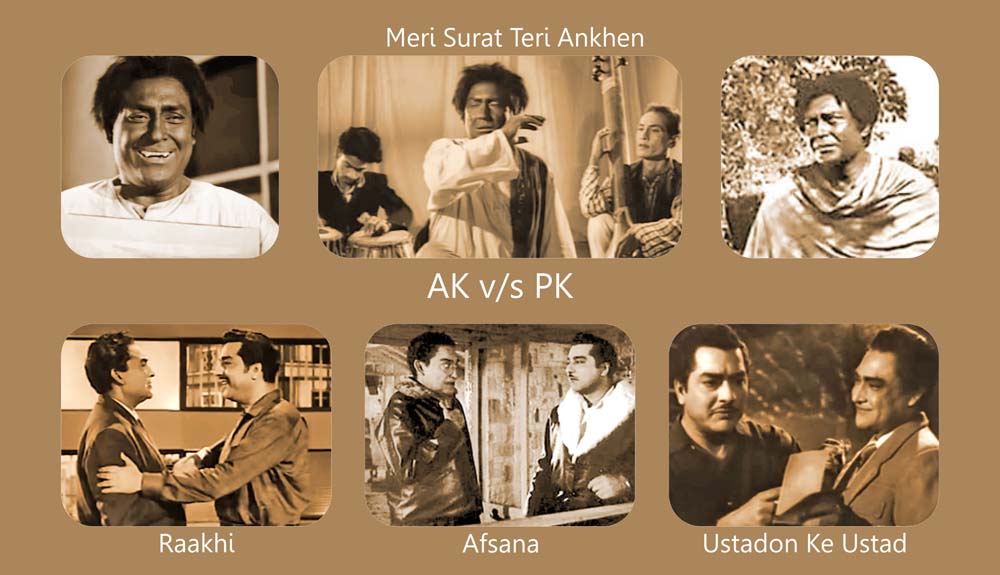
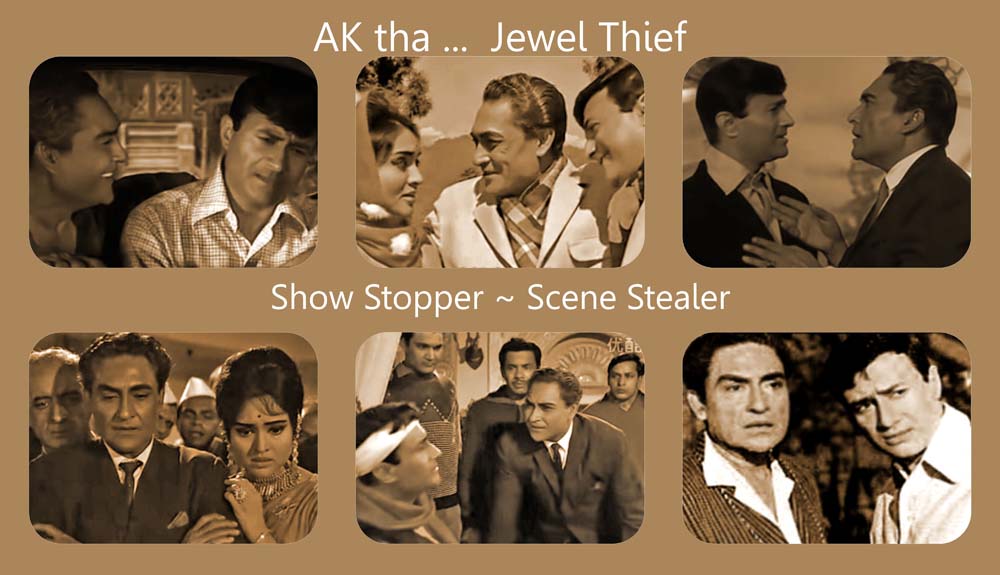
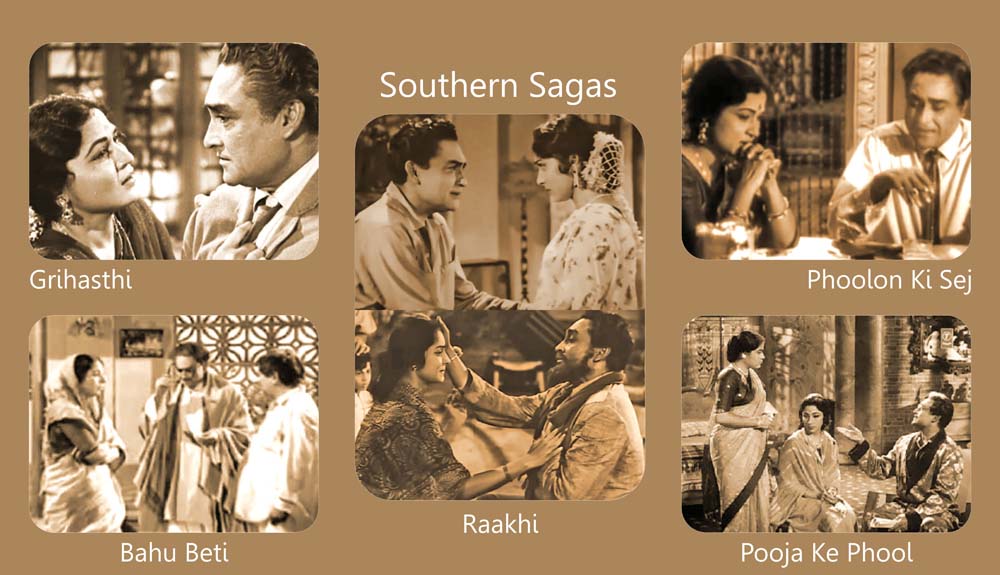
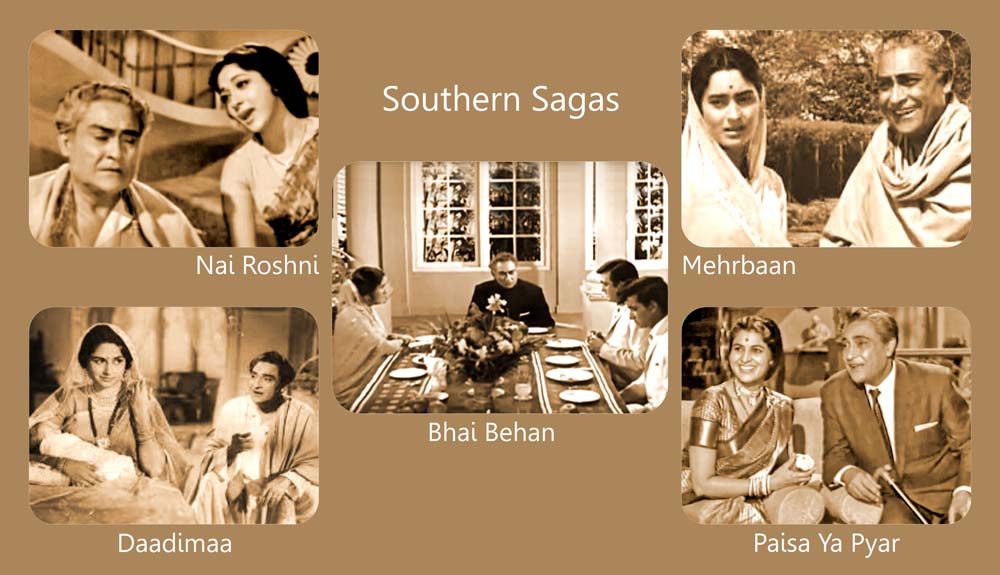
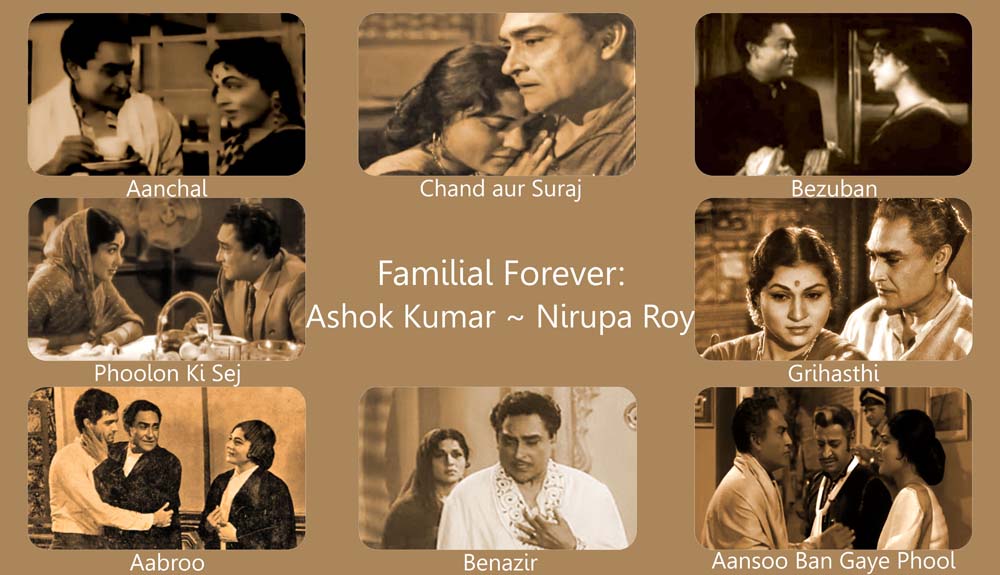
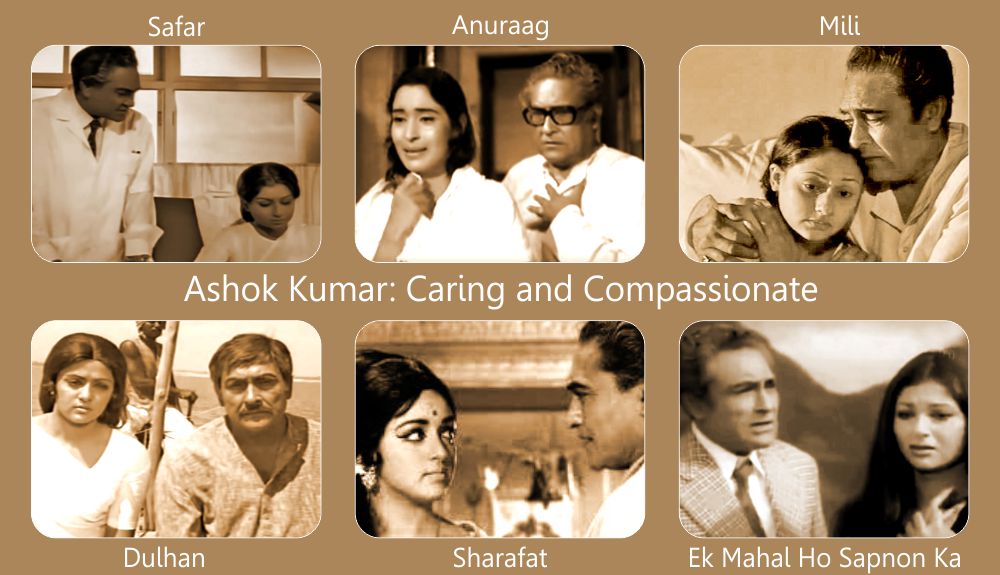
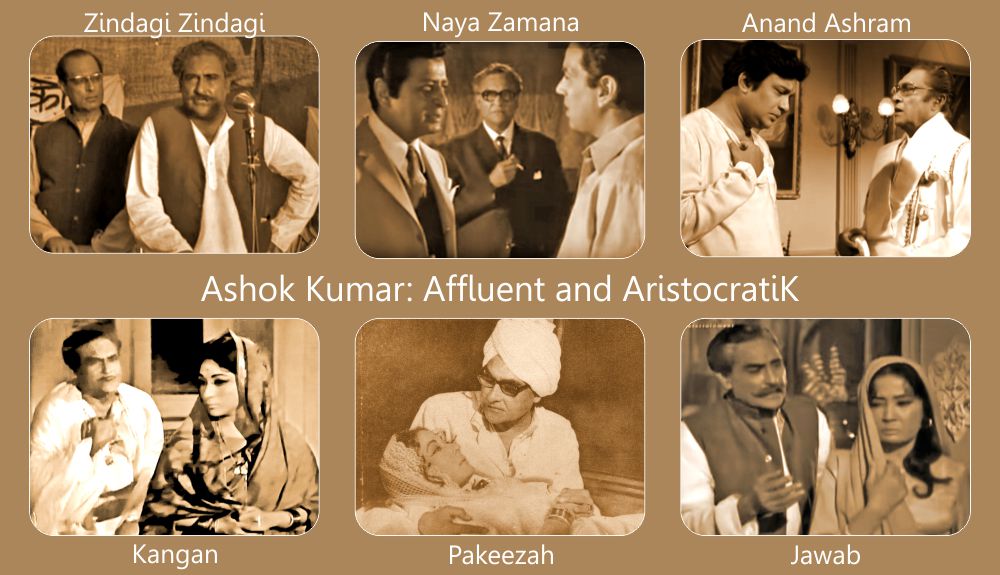
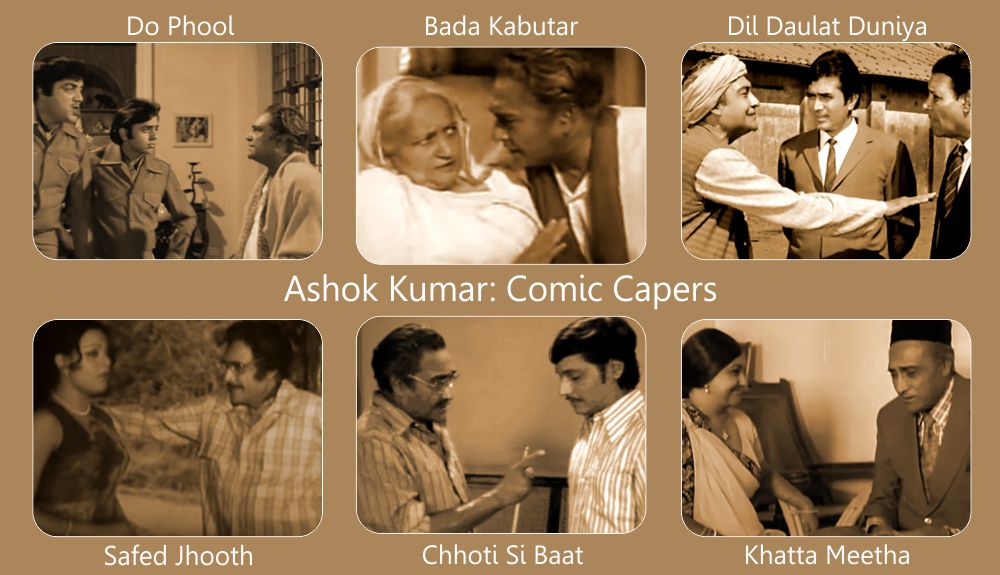
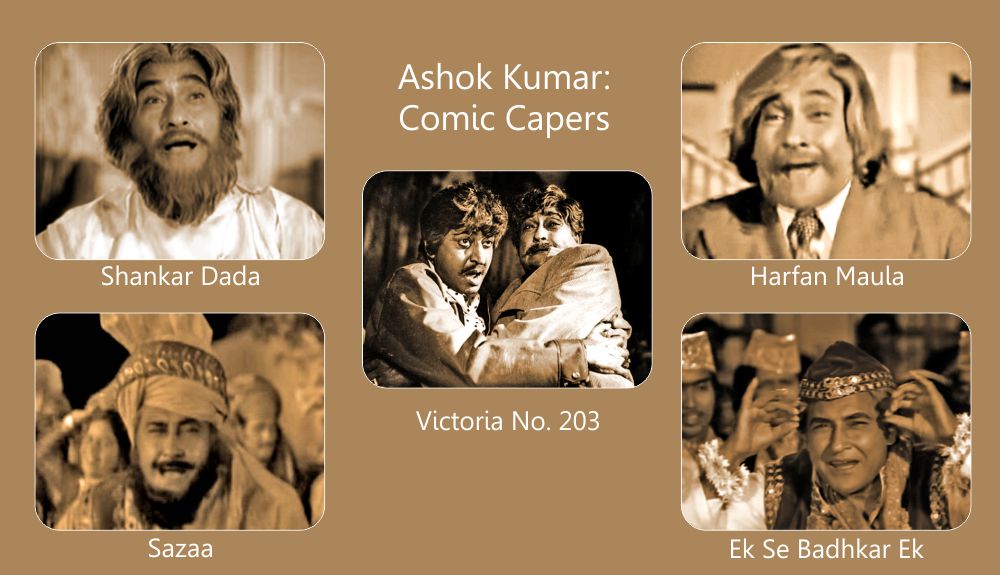
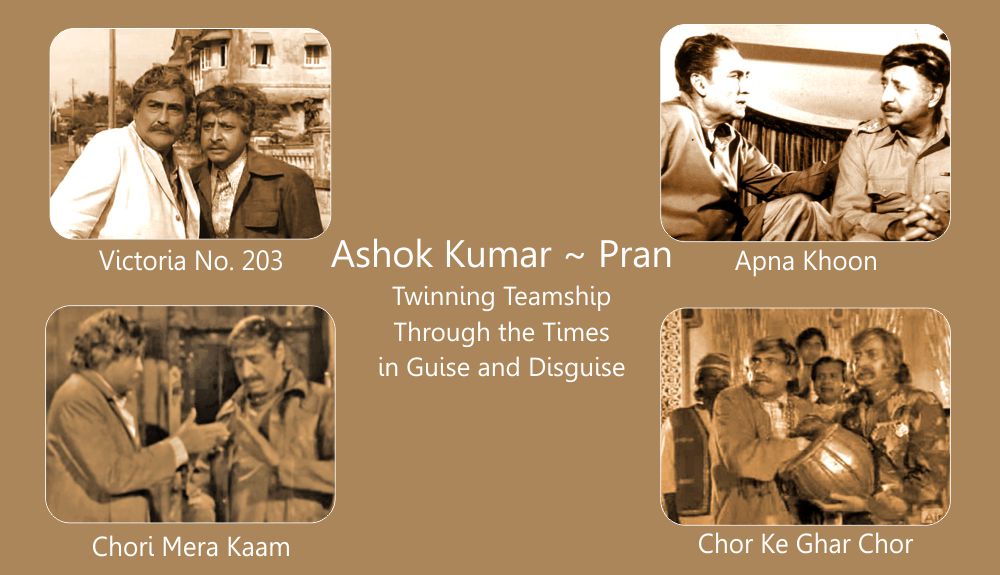
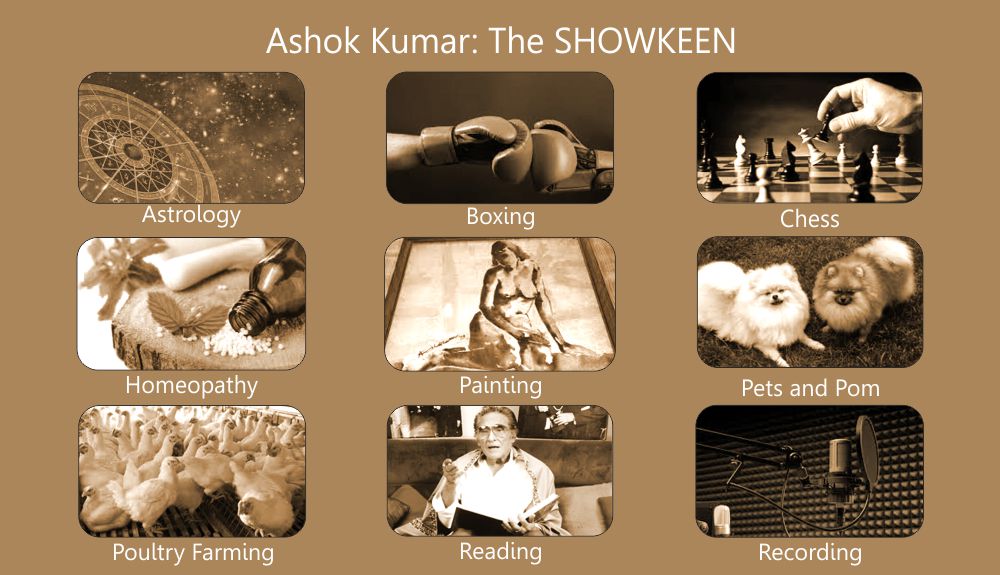
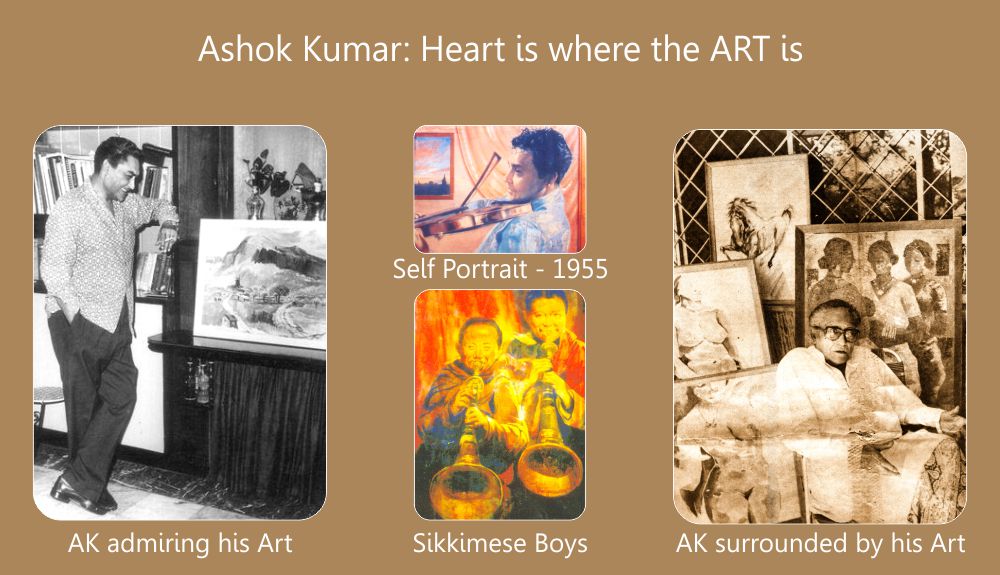
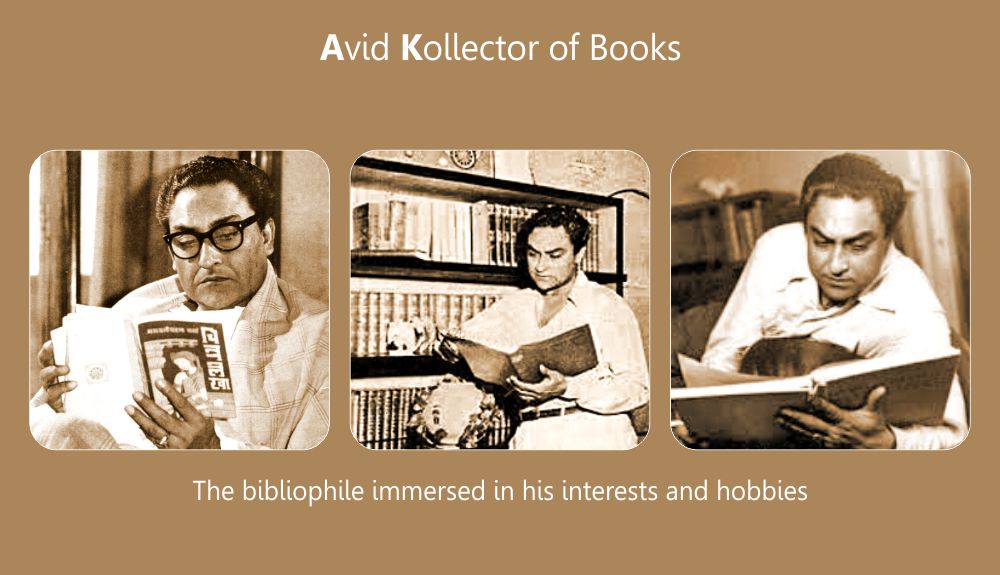
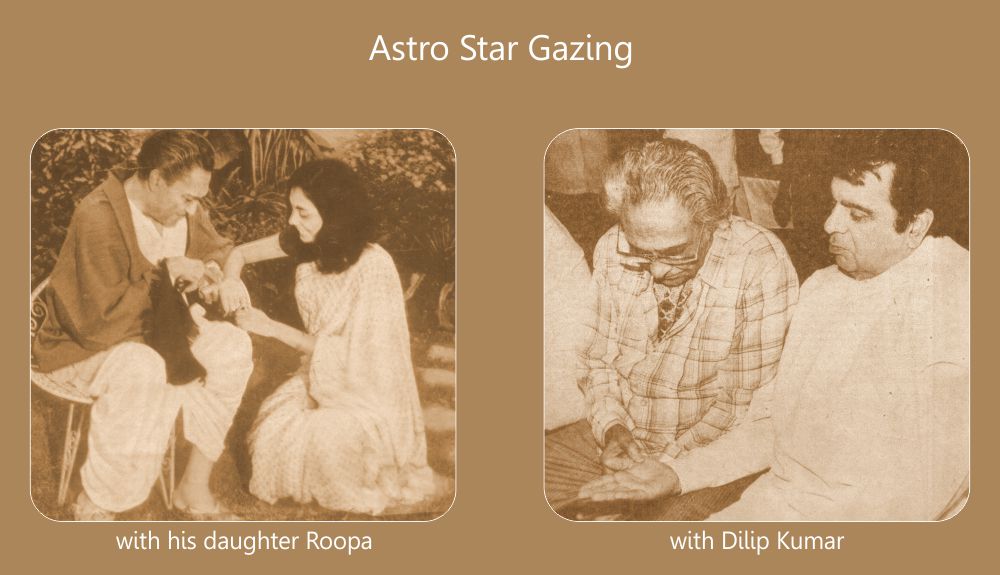
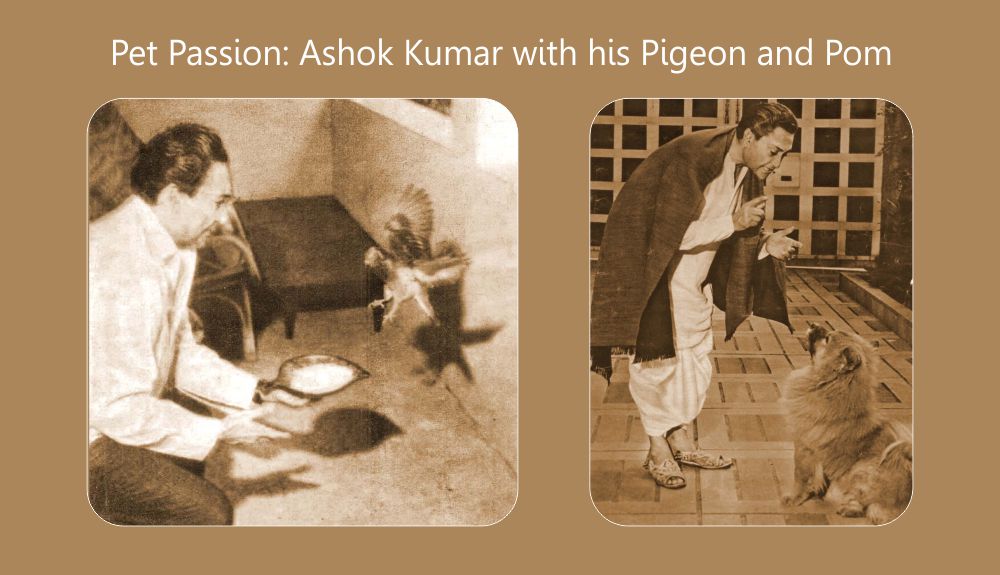
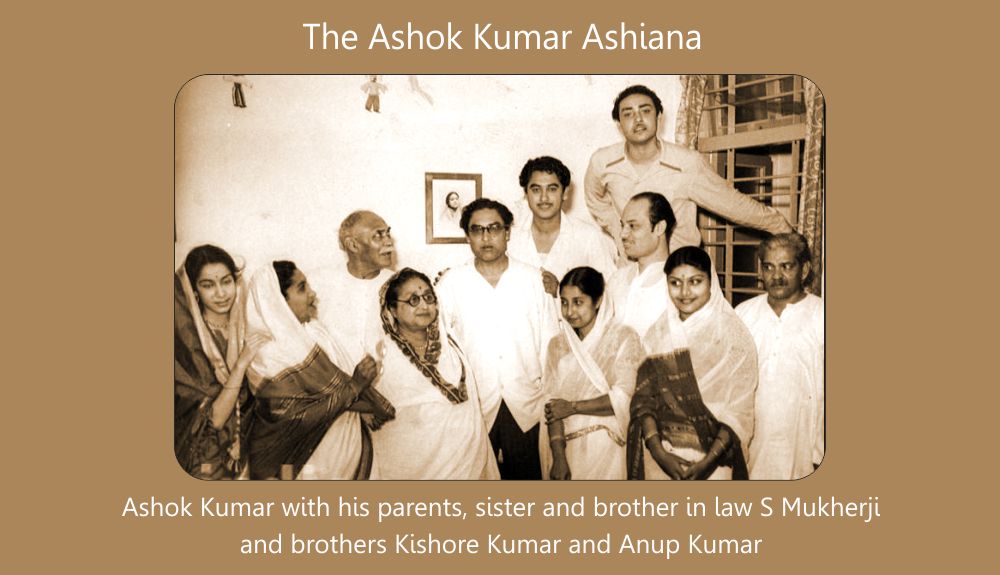
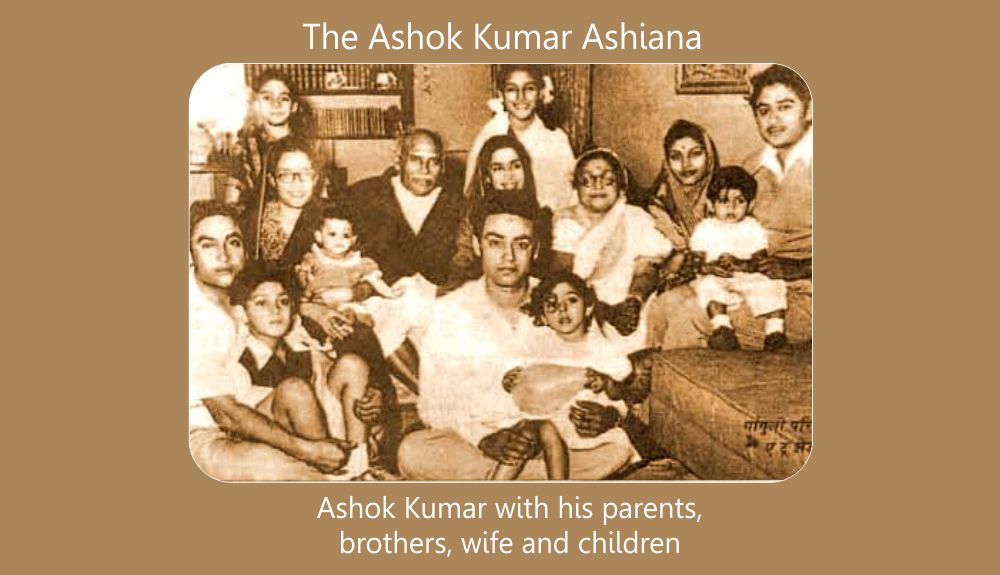
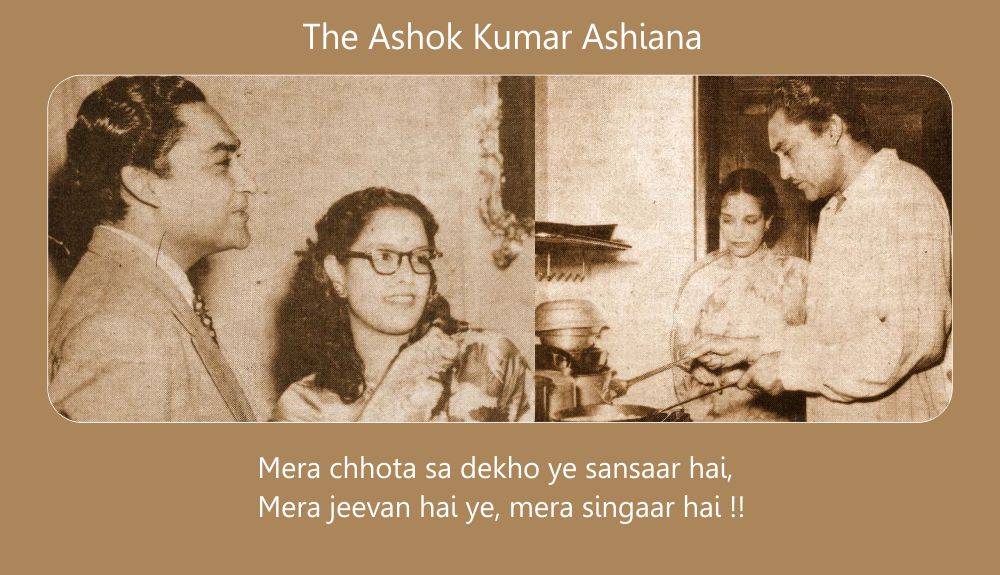
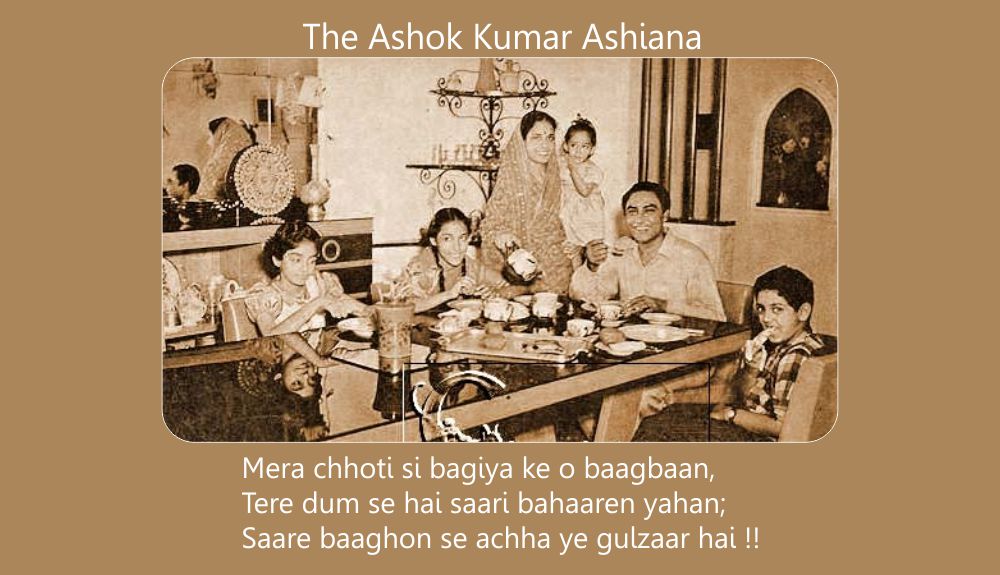
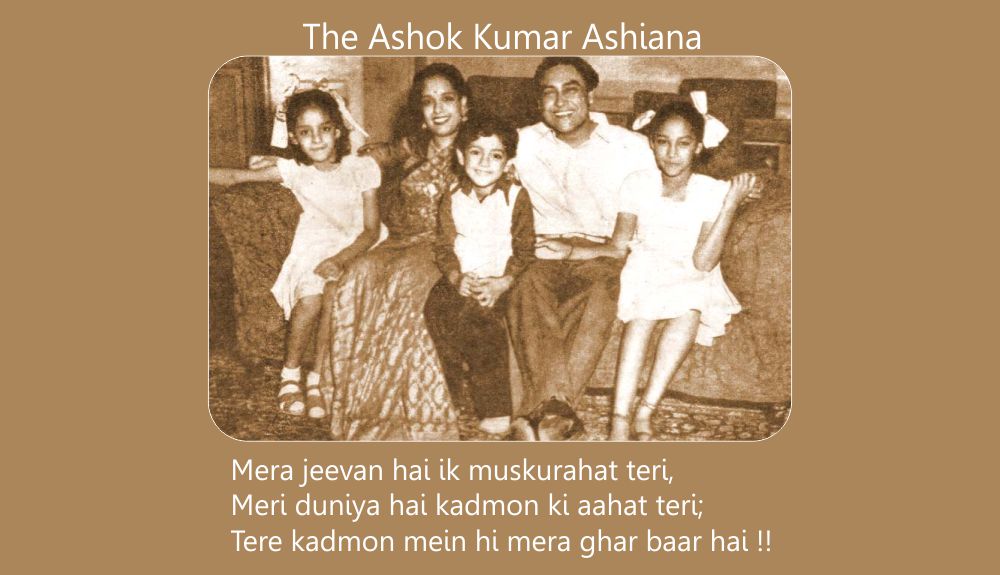
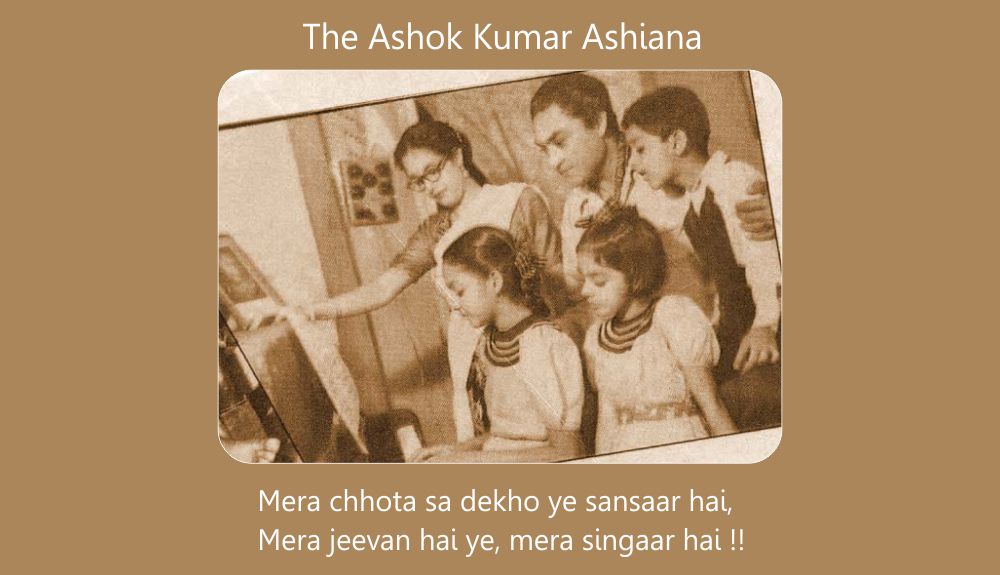
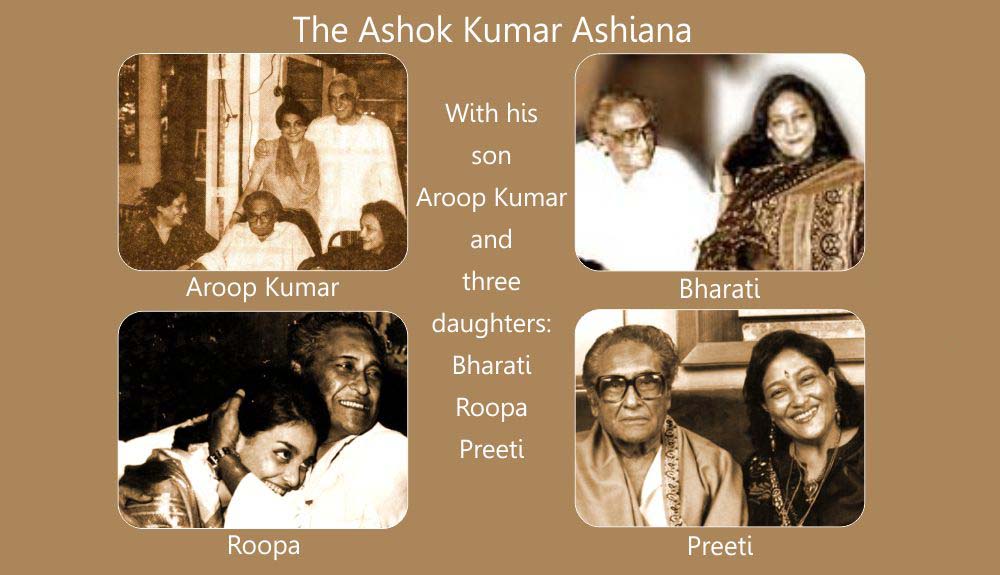
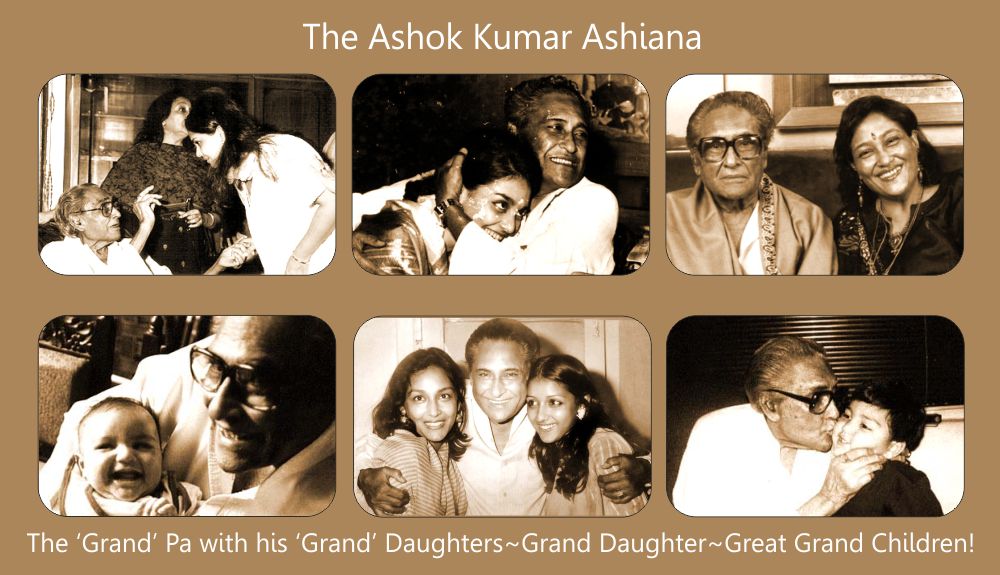
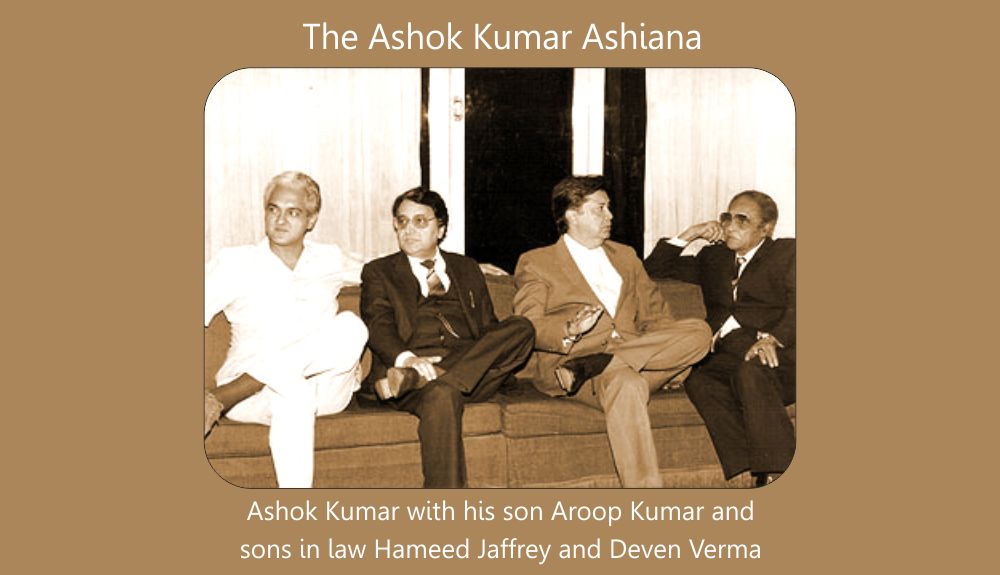
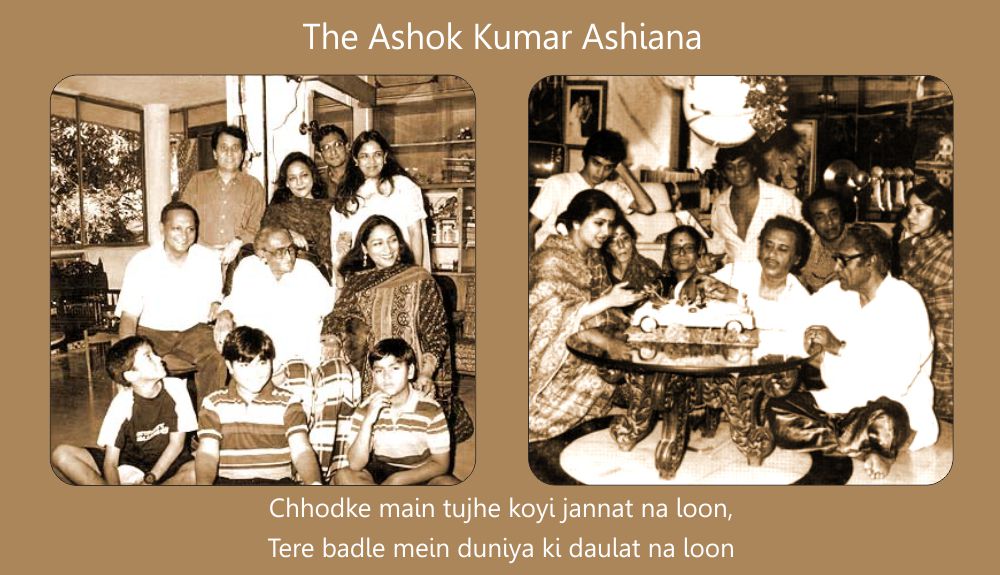
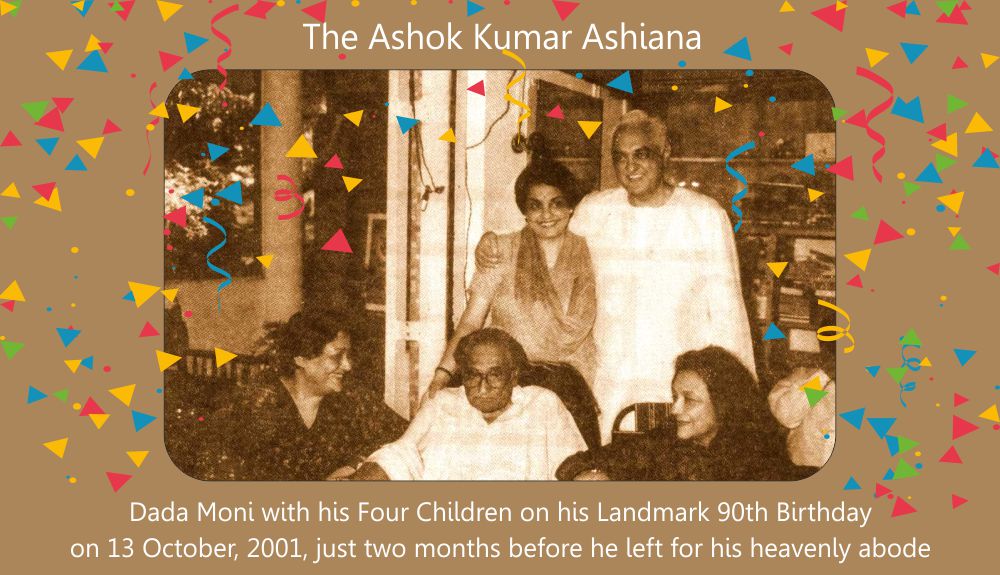
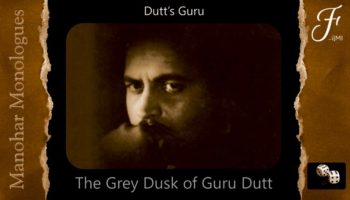
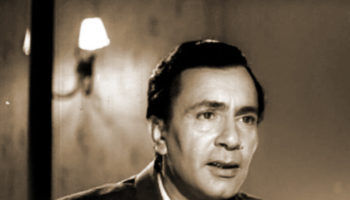
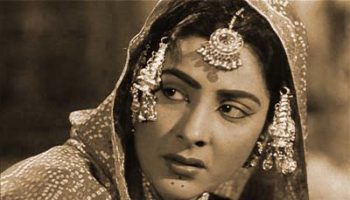
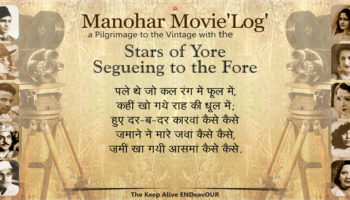
An amazing and deeply researched tribute to the legend. The intricate details, the flow of events and the anecdotes made this a wonderful experience thereby sharing his inspiing story not just to his fans but to his family members as well.
Manohar Monologue is a unique and very engaging style of expression combining the subtle art of speech, imagery, video and music to tell a wondrous tale.
I wish Manohar and his team the very best of success in telling more such inspiring stories of legends from our industry.
Thank Your Tushar, your grandfather IS an institution and an inspiration to so many in the field of art and films. His charisma and creativity, persona and personality and illustrious career spanning over five decades (a feat accomplished, arguably, by Amitabh Bachchan only in the realm of acting) are the inspiration behind this unobtrusive attempt at keeping alive his memorable works alive. God willing, we will repeat the Monologues programme in the coming year. Your aunt is in touch with me in this regard.
Thank You Tushar once again. Please forward the write up to your other family members as well. I have already sent to your father, Bharati ji, Roopa ji.